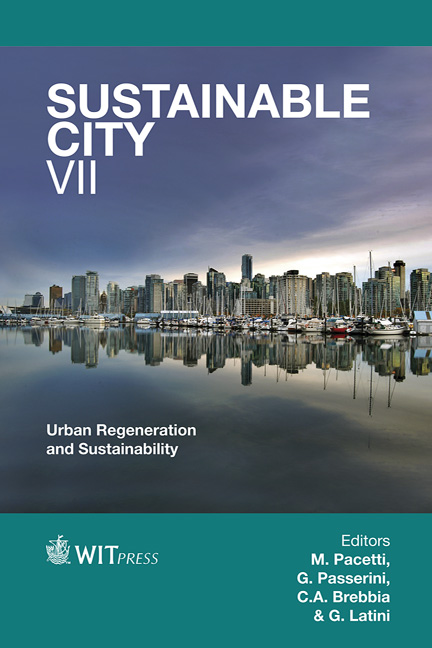Post-industrial Urban Strategies
Price
Free (open access)
Transaction
Volume
155
Pages
12
Page Range
35 - 46
Published
2012
Size
2,127 kb
Paper DOI
10.2495/SC120041
Copyright
WIT Press
Author(s)
B. Niemann & P. Schädler
Abstract
In times of the continuous transformation of urban structures in terms of growth and shrinkage, sprawl and the compact city, adaption and individuality, the only possibility for planners to cope with these circumstances while considering steadily changing parameters, is a strategic design approach. This means developing concepts based on variety, flexibility and stability at the same time: On the one hand, the intactness – or wholeness – referring to the existent context, on the other, the openness for future trends. Life cycles of cities and buildings are decreasing. Especially infrastructural systems which were generously created in the post-war period significantly shaping our landscapes are now shifted, transformed or revitalized. These spaces, together with the numerous industrial wastelands that are occurring, open up opportunities to become motors of city developments. It might be that the deficits in frequently criticized modern urban design practices are less related to the quality of individual buildings but rather in the neglect of gaps and the spaces in between them. As cities cannot be planned as a whole, but with subspaces being optimized partially independent from each other, the lack of coherence tends to create landscapes made of isolated fragments with an insular character, dominated by commercial districts, shopping malls, airports or museums. Strategic approaches for the post-industrial city pursue the re-appropriation of abandoned sites. With the means of innovative and unusual utilization concepts (temporary uses, promotion of public spaces, urban agriculture and others), formerly separated quarters can become part of a coherent spatial network – and therefore create a vibrant urban fabric appealing to its citizens. Keywords: post-industrial, strategic design, open wholeness, flexibility.
Keywords
post-industrial, strategic design, open wholeness, flexibility.





